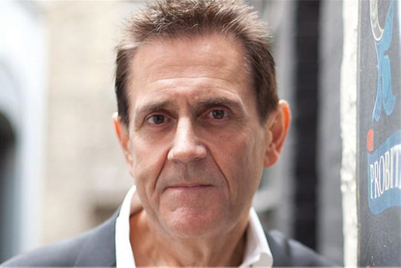
The National Rifle Association spent around $30m helping Donald Trump to get elected.
In return, Trump made it clear he would not be introducing any form of gun control.
Quite the opposite, in fact.
Under Trump, the future of gun ownership has never been more assured.
Strange, then, that one of America’s biggest and oldest gun manufacturers has just filed for bankruptcy.
Remington is $950m in debt and profits have dropped 90%.
Its shares have fallen 64%, sales have dropped by 36% and profits have gone down from $32m to just $3.2m.
Simply because, under Trump, gun ownership has never been more secure.
Under Barack Obama, all the talk was of gun control, so people rushed to the gun shops to buy guns before Obama could ban them.
The gun shops couldn’t stock enough guns.
The manufacturers couldn’t make enough guns.
So gun sales, and profits, went through the roof.
But under Trump, the future of guns is secure, so there’s no longer any rush to buy guns.
Consequently, the gun stores are left with lots of inventory they can’t sell.
Which means they’ve stopped ordering guns.
Which means the manufacturers had to stop making guns.
Which means Remington, for one, has gone broke.
Back in the 1970s, gun ownership in America was in long-term decline.
But when Obama talked about gun control, gun ownership started to grow.
So that now there are 88 guns for every 100 Americans.
But, of course, not all Americans want guns.
So these are not triallists buying their first gun – they are mainly repeat purchases.
About nine million Americans own at least 17 guns each.
Another 7.7 million own 140 guns each.
And as perceived scarcity is no longer a threat, the market is saturated.
Professor Robert Spitzer, of the State University of New York, called this "The Trump Slump".
Robert Cialdini is professor of marketing and psychology at Arizona State University.
He cites the Scarcity Heuristic: "The more difficult it is to acquire an item, the more value that item has."
The Scarcity Heuristic has four main variations: Quantity, Rarity, Time and Censorship.
It’s based on Reactance Theory, and states that "Whenever free choice is limited or threatened, the need to retain freedom makes us desire the object under threat more than if it was not in danger of being lost".
This is clearly what was happening under Obama, and it was good for gun manufacturers.
But under Trump there is no threat, so the desire vanishes.
It’s worth us studying the Scarcity Heuristic and how to use it.
In 1774, King Frederick II of Prussia wanted to solve the food shortage by getting peasants to grow and eat potatoes.
But the peasants hadn’t seen potatoes before and they didn’t want them.
So, instead, Frederick banned peasants from eating potatoes and placed guards around the royal potato patch.
The peasants were intrigued and began stealing potatoes from the King’s patch and growing them – then they began cooking and eating them.
Potatoes soon became the staple food all over Prussia.
People often don’t want something until they can’t have it – then they really want it.
Which is how Obama managed to sell more guns than Trump.
(Dave Trott is the author of Creative Mischief, Predatory Thinking and One Plus One Equals Three. This article first appeared on CampaignLive.co.uk)


.jpg&h=334&w=500&q=100&v=20250320&c=1)
.jpg&h=334&w=500&q=100&v=20250320&c=1)
.jpg&h=334&w=500&q=100&v=20250320&c=1)
.jpg&h=334&w=500&q=100&v=20250320&c=1)
.jpg&h=334&w=500&q=100&v=20250320&c=1)

.jpg&h=334&w=500&q=100&v=20250320&c=1)
.jpg&h=334&w=500&q=100&v=20250320&c=1)
.jpg&h=334&w=500&q=100&v=20250320&c=1)





.jpg&h=268&w=401&q=100&v=20250320&c=1)
.jpg&h=268&w=401&q=100&v=20250320&c=1)

.jpg&h=268&w=401&q=100&v=20250320&c=1)
